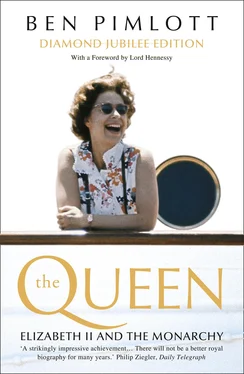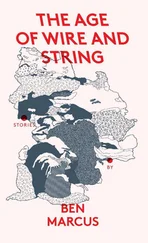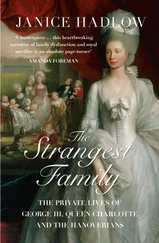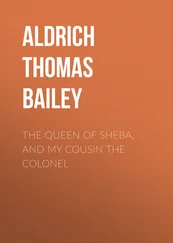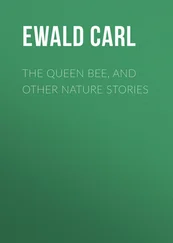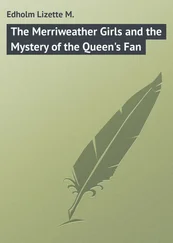But there was one aspect of the Princess’s education that was not neglected: in view of the sporting pursuits of her parents, it would have been remarkable if it had been. Surrounded from earliest childhood by horses, and by servants who trained, fed and groomed, and relatives who owned, rode and talked about them, Elizabeth, like many aristocratic little girls, became a keen equestrian. Every account of her infancy suggests that an interest in horses and ponies was almost innate. George V, player of nursery equestrian games, was one influence: it may not be coincidence that Elizabeth’s early interest in horses and ponies followed her grandfather’s greatest racing success, when his filly Scuttle won the 1,000 Guineas in 1928. Her first reported riding ‘lesson’ took place in the private riding school in Buckingham Palace Mews in January 1930, when she was three and a half, under the supervision of the Crown Equerry, Colonel A. E. Erskine. 24It was her parents, however, who became her first serious teachers. When she was five, the Duchess led her on Peggy, the Shetland pony given by the King, to a meet of the Pytchley Hounds at Boughton Cover. For a time the stud groom at the Royal Mews took charge of the children’s riding. ‘The Princess will undoubtedly be a keen horse-woman when she grows up,’ it was accurately predicted when she was ten. 25
In 1938, the royal riding instructor, Horace Smith, took over and began giving the two girls twice-weekly lessons at the Palace, accompanied by his own daughter. Training included mounting exercises, like touching their toes and leaning backwards until they were lying down on their ponies’ backs, to improve their balance and confidence. Smith found Elizabeth, in particular, a good and eager pupil – a conscientious listener, and keen to improve her skills. He also noticed something else: she was as interested in the business of looking after horses as in riding them; and she would ply him with questions about their feeding and management. ‘I think that in those days, when she was twelve years old, her chief interest in life lay in horses,’ Smith later recalled. On one occasion she told him, a sentiment often later repeated, that ‘had she not been who she was, she would like to be a lady living in the country with lots of horses and dogs’. 26
Dogs mattered almost as much as horses: a point which also did not escape royal observers of the day. As ordinary children more often owned dogs than horses, the princesses’ canine interest provided, in some ways, a stronger bond. It quickly became established that not only did Elizabeth and Margaret Rose like dogs, they had a special feeling, and even an empathy, for them. Articles and books about royal caninism became a genre. ‘. . . [F]ew people realise the marked similarity between the unaffected sincerity that so delightfully characterizes these royal but very human children, and the cheerful contentment of their dogs,’ reflected an especially liquid work called Our Princesses and their Dogs in 1936. ‘I doubt if I have ever encountered dogs who shared with their owners a quieter or serener companionship.’ 27Photographs of the children mercilessly mothering plump corgis – the family’s favourite breed – filled the picture papers.
But it was the horse world that always took precedence. With Princess Elizabeth, horses were more than an interest: they became a passion, even an obsession. Rooms and corridors, first at 145 Piccadilly, then at Buckingham Palace, were filled with an expanding collection of toy and ornamental horses, of every material and size. Not just the indulgent old King but the governess as well were cajoled into the performance of equine role-play. A favourite game was to harness Crawfie with reins, as if she were pulling a grocery cart. Then she would be patted, given a nosebag, jerked to a standstill, or instructed to paw the ground. If the weather was cold enough for her nostrils to steam, so much the better. Sometimes, however, Elizabeth would weary of this ritual. She herself would become the horse, and make ‘convincing little whinnying noises’. At other times, she and her sister would sit for hours at the window at 145 Piccadilly, watching for horses in the street. 28
Were animals a substitute for other children? Her governess, in describing such pursuits, clearly implied that they were – indeed the idea of a ‘poor little rich girl’ who lived a well-ordered, comfortable, but isolated life is central to her account. The two images of simplicity and loneliness are juxtaposed. On the one hand, there is a stress on the gap between the luxury people imagined royalty to enjoy, and their disciplined real lives; on the other, Crawfie often describes the yearning of the girls to be just like other children, with the same kind of fun. In her version of the princesses’ childhood, bedtimes were early, treats were few, seaside holidays rare, pantomimes visited only once a year. Other children seldom came to tea. For a time, Elizabeth made ‘rather special friends’ with the daughter of an eminent radiologist who happened to be a neighbour, but this unusual relationship ended when the child was sent away to school. It was, according to Crawfie, difficult for the children to gain other companions. The Duke of York was a private and unassuming man who, although he did not shun social life, did not seek it either. He and his wife rarely dined out or went to the cinema or theatre, and he was perfectly content to spend the evening at the family hearth, with his wife and daughters, indulging his hobby of needlework, pursued with such diligence that, during one burst of embroidering activity, he made a dozen chair covers in petit point for Royal Lodge. The impression is of cosiness, but also of domestic claustrophobia.
Perhaps such a picture of seclusion was exaggerated, and related as much to Miss Crawford’s home-sickness for Scotland as to the actual feelings of her charges. Meetings with the offspring of suitable parents, mostly relatives and courtiers, did occur. Elizabeth seemed to mix with them happily and naturally. Yet there seems always to have been a gulf, unavoidably imposed by convention, which stood in the way of equality. Patricia Mountbatten remembers Elizabeth coming to tea as a little girl of five or six with curly blonde hair, at her parents’ London home. She recalls a child like any other – except that she attracted special interest among the adults. There was a buzz of excitement among the nannies and governesses. ‘She wasn’t just another child of friends of my parents. She created a little flutter.’ 29An aristocratic contemporary remembers meeting Elizabeth for the first time at his birthday party when they were both three. He had received a pedal car as a present, and his father insisted that he should let her ride in it. ‘She was a princess,’ he says. ‘You knew she was different.’ 30
AS ELIZABETH grew, interest in her increased. Visitors inspected her closely and seldom failed to remark afterwards on her beauty and poise, and on a precocious maturity achieved (so it was said) without loss of childish innocence. At the same time, a constitutionally convenient contrast was drawn between her own character, and that of her younger sister. Crawfie was later blamed for inventing this distinction, but that is unfair. Long before the publication of her book, it had been firmly implanted in the public mind. The roguishness of Elizabeth faded, especially as her destiny became apparent, and weightier qualities took over. Early in the reign of George VI, one writer compared the artistic and musical leanings of Margaret with the ‘serious turn of mind’ of Elizabeth, who also had an aptitude for languages. In disposition, it was noted, the elder Princess was ‘quiet, unassuming and friendly, yet she has inherited a dignity which properly becomes her position.’ 31In a book published in 1939, the journalist Beverley Baxter wrote of Margaret’s talents as a mimic, and Elizabeth’s tendency to frown on ‘her sister’s instinct to burlesque, while secretly enjoying it’. 32Margaret was presented as impish and whimsical, Elizabeth as dutiful and responsible. ‘Margaret’s capacity for mischief, practical joking and mimicry,’ maintained a typical account in 1940, produced an elder-sister sense in Elizabeth. 33
Читать дальше
